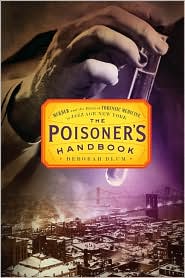Spring is reluctantly dragging its way into the upper Midwest. Harrier hawks have arrived to catch the rodents flooded out by the all-saturating snowmelt. The cardinals and sparrows that toughed out the winter are brightening in song. It will still be a long month, though, before most warblers make their way to the 45th parallel.
Spring proves that the "temperate zone" is a misleading name for the middle states. I traveled southeast to Pittsburgh to be greeted by snow, rain, sun, snow, all in one day, while the Twin Cities, its street corners still obscured by blackened snow hills, basked in 50 degree (felt like 70 I'm told) sunshine. The Pitt hills, black beneath with coal, did see sun long enough to highlight the University's "Cathedral of Learning." It's reassuring to think that once learning seemed worthy of a cathedral, and inside the fan-gothic ceiling rises from the labors of students and ipads and touchscreens.
I was laboring not so much with the elevation of ideals as with a more sensational read, The Poisoner's Handbook by Pulitzer-Prize winning science writer, Deborah Blum. The subtitle explains Blum's nonfiction narrative mission: "Murder and the Birth of Forensic Medicine in Jazz Age New York." Blum, at a talk I heard, says she intends to draw the reader in with a seductive first paragraph. Here's how the Handbook begins: "Until the early nineteenth century few tools existed to detect a toxic substance in a corpse. . . . As a result, murder flourished. It became so common in eliminating perceived difficulties, such as a wealthy parent who stayed alive too long, that the French nicknamed the metallic element arsenic poudre de succession, the inheritance powder."
With macabre detail, Blum tells of scientists Charles Norris and Alexander Gettler who spent personal fortunes and logged in long hours to make forensic science an essential reliable force in securing justice. A number of the cases echoed Sherlock Holmes scenarios or inspired writers like James M. Cain of Double Indemnity and The Postman Always Rings Twice. There are also tales of accidental poisonings, like those of the "Radium Girls" who painted luminous, radioactive dials on watches: studies of their decline and deaths led to breakthroughs in understanding radiation's dangers.
What I hadn't expected to find was the significant and sad role dogs played in the new science. In one case, cats and dogs that had been found dead were placed in chambers filled with carbon monoxide to test the theory that a corpse does not absorb the gas, which blew apart one man's explanations of how his wife died by a leak rather than, say, strangulation. In other tests, the animals suffered as the scientists measured the escalating impact of different substances: "Two dogs received measured doses of potassium cyanide through a stomach tube; the others were forced to inhale hydrogen cyanide" by being strapped down with a cone over their muzzles." Dogs were also used to determine the levels of chloroform in the brain that produced a light stupor, unconsciousness, or death. In a case when a young woman died on an abortion table, the doctors claimed accidental bleeding as cause of death, not their use of chloroform. The forensics department was suspicious but "wanted the results to be inarguable." So dogs were tested to determine the lethal level. Another test seems more harmless: some dogs were habituated to alcohol, others not, and then both sets were administered alcohol to see the impact: "At half a cup, the chronic drinker [dog] was unfazed, as 'playful as ever.' His companion, though, developed a slightly staggering walk and then sat down and refused to move." Double the alcohol and all dogs failed sobriety. To get exact measurements of alcohol levels, the dogs were killed and their organs analyzed.
The scientists featured advanced lab techniques and knowledge about chemical uses and dangers--their learning served health and justice. However, scientific evidence can only go so far in creating moral clarity out of hearsay, hidden motives, ignorance, need, and competing interests. Blum avoids passing direct judgment but presents evidence that speaks and outspoken scientists. Charles Norris repeatedly denounced Prohibition as a colossal failure that made drinking sexier, more potent in alcoholic content (bathtub gin have a much greater kick than beer or wine), and more dangerous. "Choose your poison" could be a literal statement during the Depression, when bootlegged hooch frequently contained dirt-cheap toxic methyl (rather than potable ethyl) alcohol and other potentially lethal ingredients added by unscrupulous bootleggers or by law-agents trying to discourage drinking. This didn't turn so many from drink as it drove them to the gutter or morgue.
TV show forensics often present exact answers provided by a minuscule slide sample, with no worry about financial or ethical costs. Blum chronicles all kinds of costs: the murders and accidents that created the need and evidence; the masses of body parts pulverized, steamed, distilled; the criminal results of desperation; and the stress on victims, police, doctors and scientists who often lacked financial and social support. Blum does not editorialize on the use of dogs, presented as part of the scientific method of the time. Whatever you think of animals and scientific testing, we can all hope that the methods of the 1920s and 30s prepared the way for much less dangerous and invasive forms of investigation that does not cause suffering to sentient beings--an issue that must be continually reviewed. And we can recognize the important sacrifice of animals.


No comments:
Post a Comment